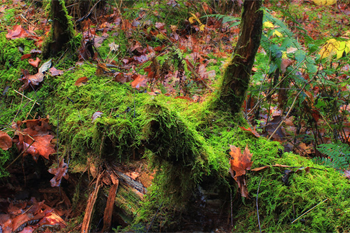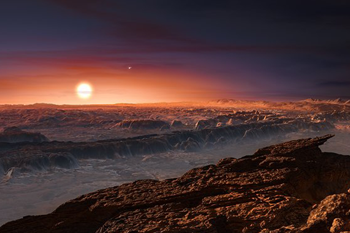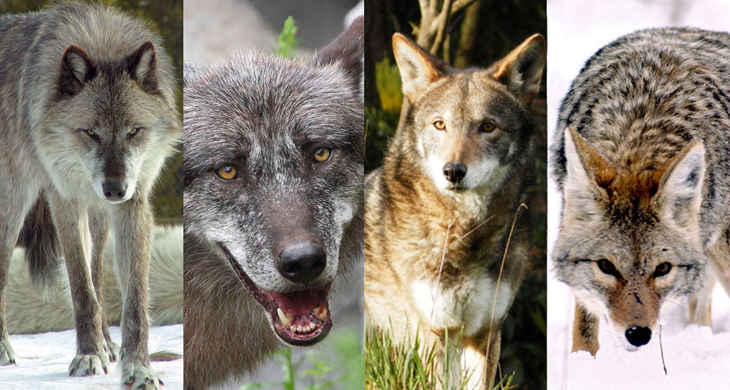The most popular stories of 2016
From zombies to Zika, here’s what you were reading

What were our most popular stories of 2016? Read on to find out!
E. Otwell
This year, scientists detected gravitational waves, a century after Albert Einstein first predicted them. The world’s coral reefs underwent a huge, devastating bleaching event. And we got the first glimmers that the Tasmanian devils of Australia may be evolving resistance to a deadly contagious cancer.
While we at Science News for Students may have found such stories to be important and interesting, our readers, it seems, had some different opinions. What do you like? The grosser the better — and animals and space, too. But you also focus on stories that are relevant to your daily lives. And there’s nothing wrong with that. Here’s what you were reading in 2016:
10. A hidden planet in our solar system
Since Pluto was demoted from planet status, there have been eight planets in our solar system. But maybe there really are nine, planetary scientists proposed in January. Some icy bodies found far beyond Neptune are moving in odd ways. The scientists calculated that those oddities can be explained by the gravitational pull of a planet orbiting on the outskirts of the solar system. If the planet exists, it would be roughly 10 times as massive as Earth and travel in an elongated orbit.
9. Schools start too early
It’s the rare student who bounces out of bed eager to go to school. One reason, it seems, is that most school schedules are not in tune with the body clocks of tweens and teens. Adolescents find it difficult to fall asleep before 10:30 or 11:00 p.m. Getting to school on time, though, often means sacrificing some of the 8.5 to 9.5 hours of sleep their bodies require. That means that many students spend their days as “walking zombies,” Janet Croft of the Centers for Disease Control and Prevention noted in our 2015 story.

8. How nature recycles its dead
That old apple rotting beneath a tree in the backyard sure is disgusting. But decomposition is an important part of life. “This is how nature recycles,” our story on rot noted. When something dies, a host of fungi and bacteria start to break it down, making its parts available for other living things to use. Scientists are finding the science of decay to be useful, too. They’re using it to aid farmers, make biofuels and preserve the health of the world’s forests.
7. Meet the (new) elements
There’s a good chance that the periodic table hanging in your classroom is wrong. That’s because scientists added four new elements to it this year. And in June, those elements finally got names. Element 113, discovered by scientists in Japan, got a name inspired by their homeland. Nihonium comes from the Japanese word Nihon, which means “land of the rising sun.” Element 115 is now moscovium, referring to the city of Moscow, Russia, where some of its discoverers are from. Element 117 was named tennessine, after the state of Tennessee, home of the three institutions responsible for its discovery. And element 118 becomes oganesson. That name was derived from one of its discoverers, Russian physicist Yuri Oganessian.

6. An Earth-like planet discovered nearby
In August, astronomers announced that they had found a planet somewhat like Earth. And it was close. Well, sort of. Proxima b lies just 4.2 light-years away, orbiting Proxima Centauri, the star lying closest to our sun. Scientists think that Proxima b might be Earth-like. But life on that planet would be far different. Because it lies much closer to its star than Earth to the sun, Proxima b whips around at such a fast pace that a year lasts a mere 11.2 Earth days.
5. Wolf identity crisis
There are a lot of wild canines roaming North America. But a genetic study found that two species — red wolves and eastern wolves — may not be true “species.” Instead, they appear to be mixes of two actual species of canines, gray wolves and coyotes. Scientists think that red wolves and eastern wolves appeared after Europeans settled in eastern North America. The settlers started hunting gray wolves. That made room for coyotes from the west. The two species interbred, producing the two other kinds of wolves.

4. Real, live zombies!
The human-size zombies stumbling about your neighborhood on Halloween definitely aren’t real. But there are real zombies out in the world. They’re just a lot smaller than us. And they have one thing in common: parasites. Scientists have found lots of examples of parasites that invade a host and take over. The parasites might make an ant die in a specific place. Or they can prompt a rodent to get eaten by a cat. Researchers are starting to figure out how this mind control works. Don’t worry, though. The scientists’ work won’t make human zombies. But it might lead to new human medicines.
3. A new superfood — from roaches?
Depending on where you live in the world, you might consume milk from cows, goats, sheep or buffaloes. Some scientists have proposed a new, super-nutritious milk. It’s cockroach milk. The Pacific beetle cockroach produces a milk-like liquid for its young. And it turns out that the liquid is what is known as a “complete food.” It has fat, sugar and protein, as well as essential amino acids. Those are ones that our bodies can’t make, so we have to get them from food. Milking roaches on a large scale isn’t practical. But researchers might be able to produce it in vats with yeast. If they do, though, they probably shouldn’t let anyone know where it originated.
2. Zika arrives in the Americas
Early in 2016 we published our first story about a worrying disease, Zika, that was spreading in Brazil. The mosquito-borne disease usually doesn’t kill people. But scientists suspected that the virus was behind many cases of microcephaly, when a baby is born with an abnormally small head. Science News for Students continued to follow the spread of the disease and scientists’ research into it. Two stories proved particularly popular among our readership: In May, scientists reported that an extract of the leaves of a Californian plant could kill the Zika mosquitoes’ larvae. And August saw discovery that the Zika virus could cause brain damage in adult humans.
1. Vaping vapors can be toxic
When electronic cigarettes were first introduced, more than a decade ago, they were promoted as a way for adults to wean themselves off deadly tobacco products. But the evidence has been mounting that e-cigs can be dangerous for kids and teens. Our #1 story of the year, on how vaping can damage the lungs, dates to 2015. But the data on vaping’s dangers continues to mount. Keep an eye on our collection of vaping stories; in the new year, we’ll have more articles explaining why adolescents and e-cigarettes shouldn’t mix.